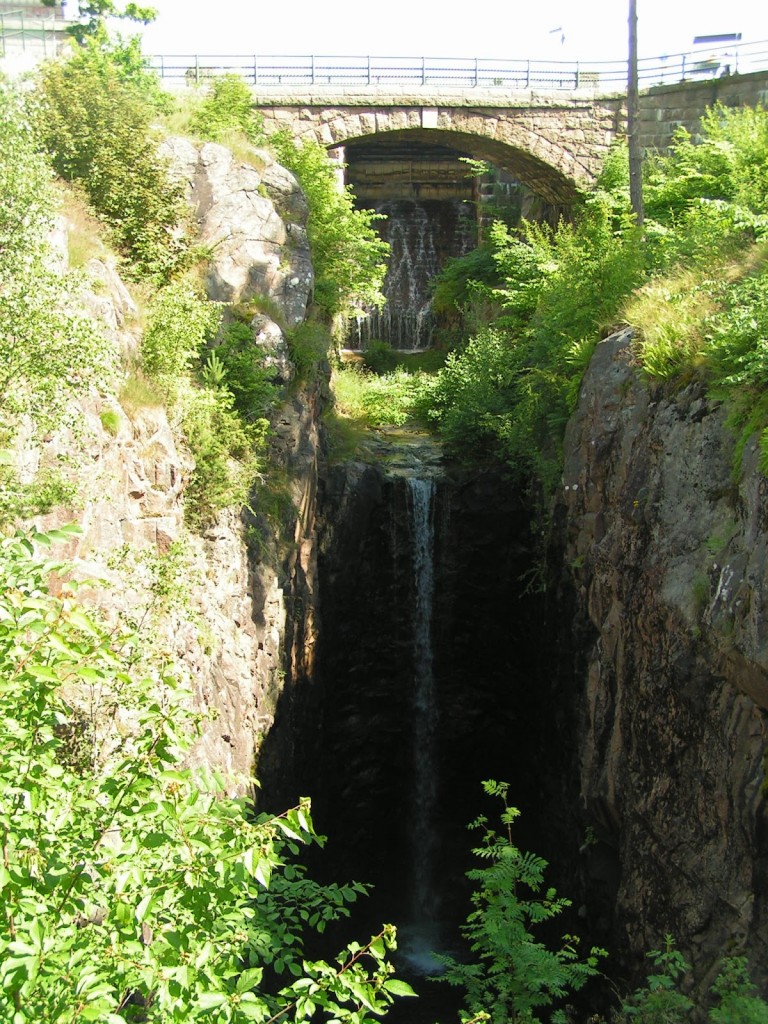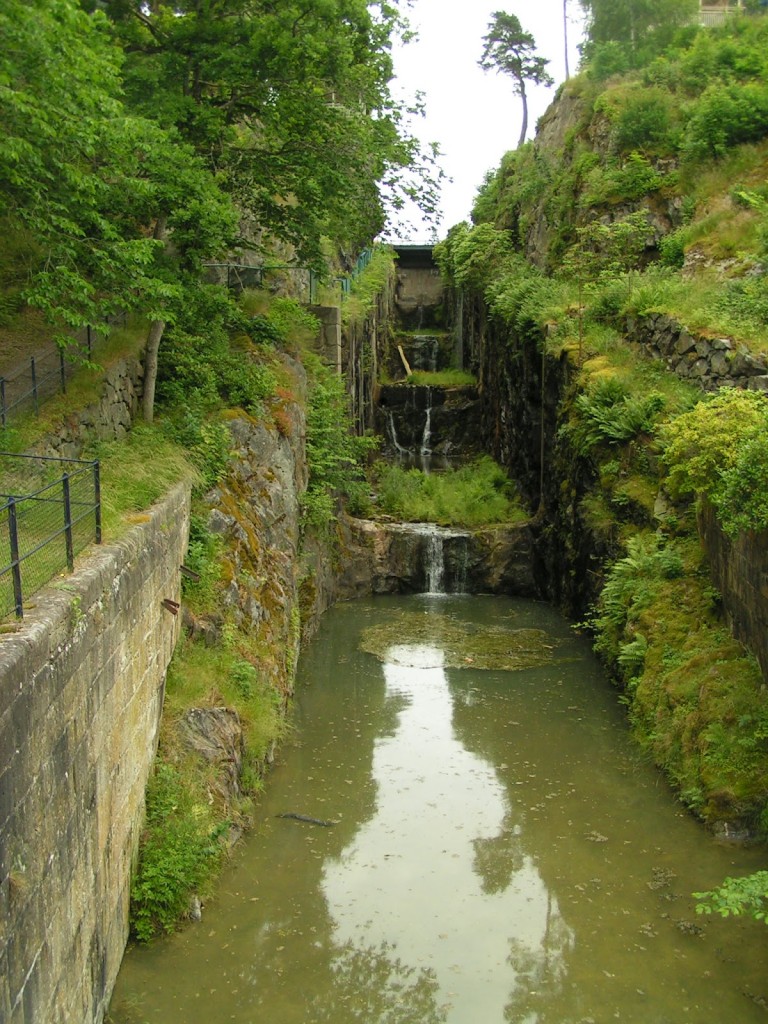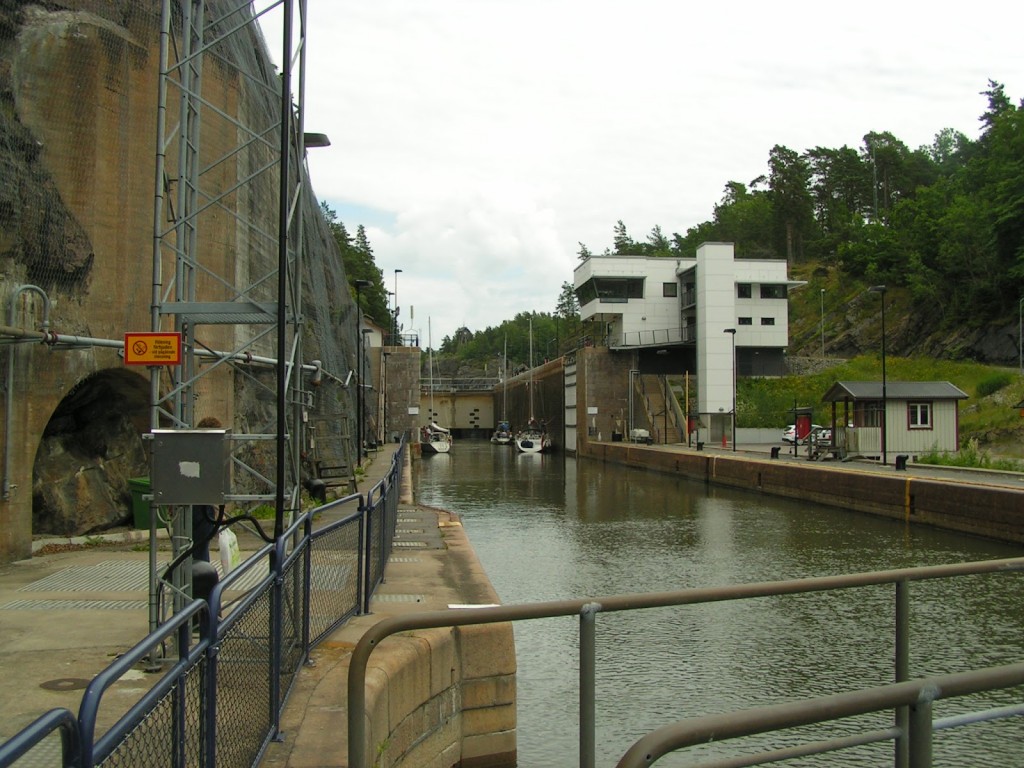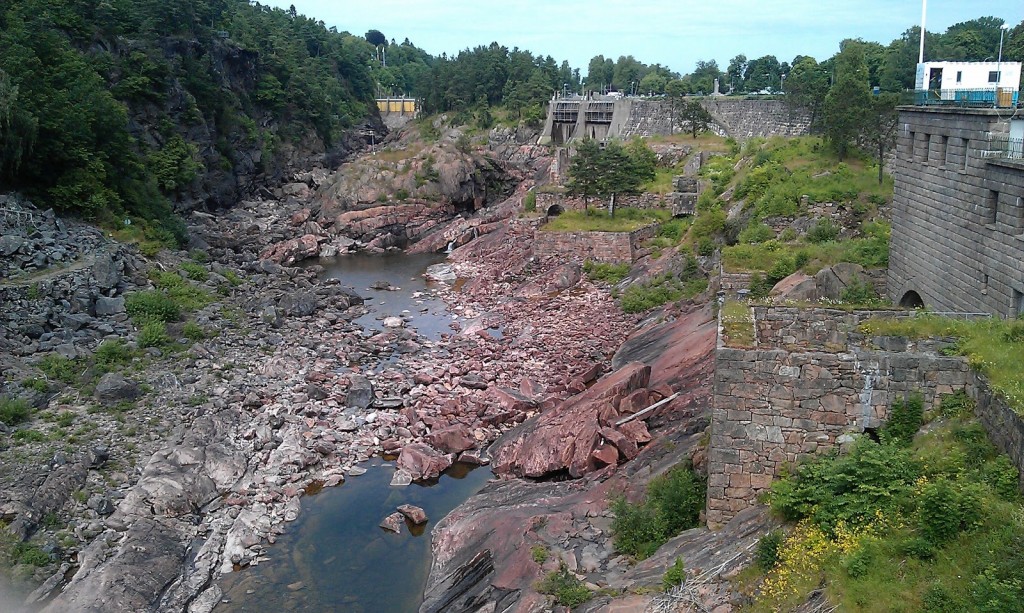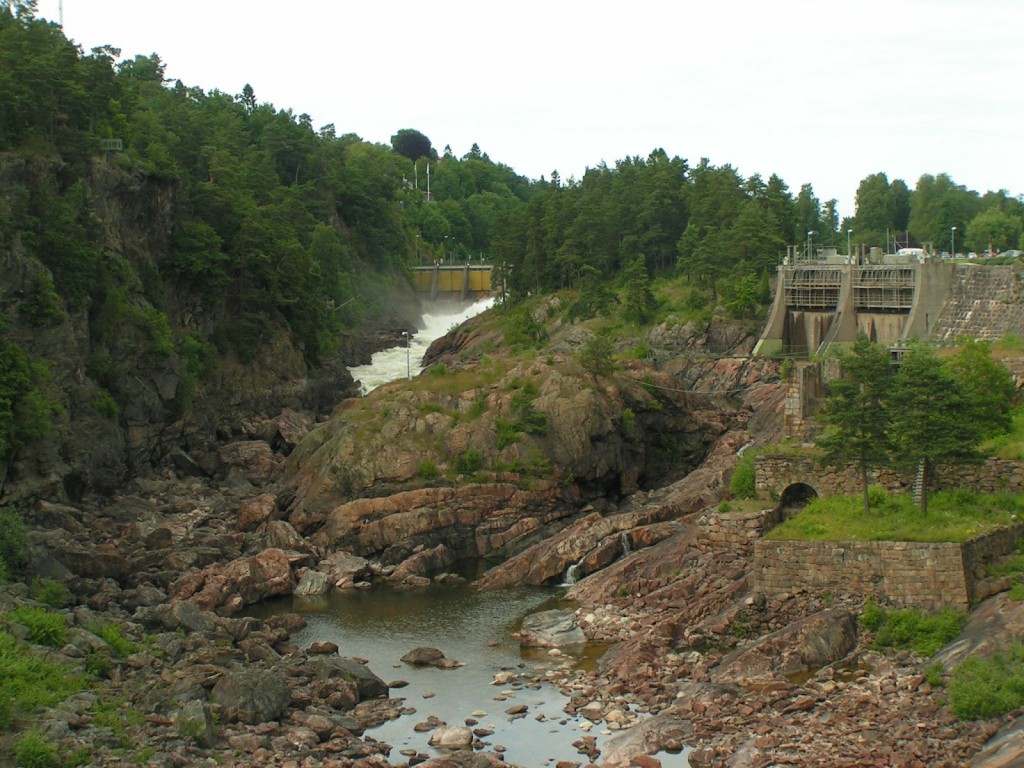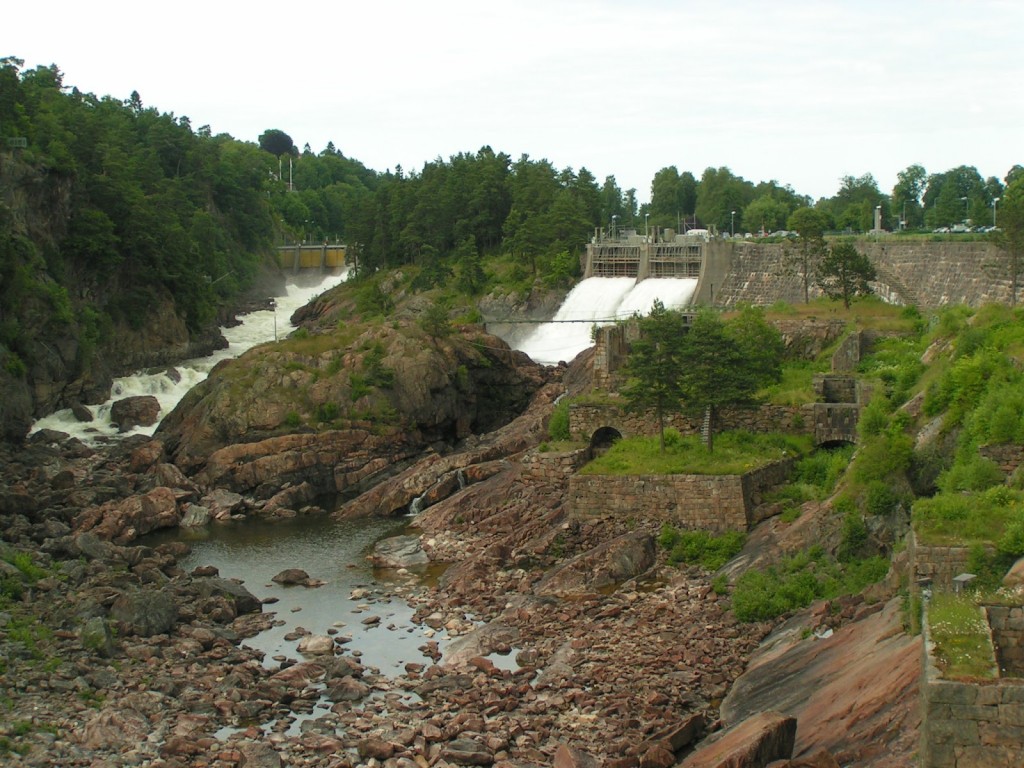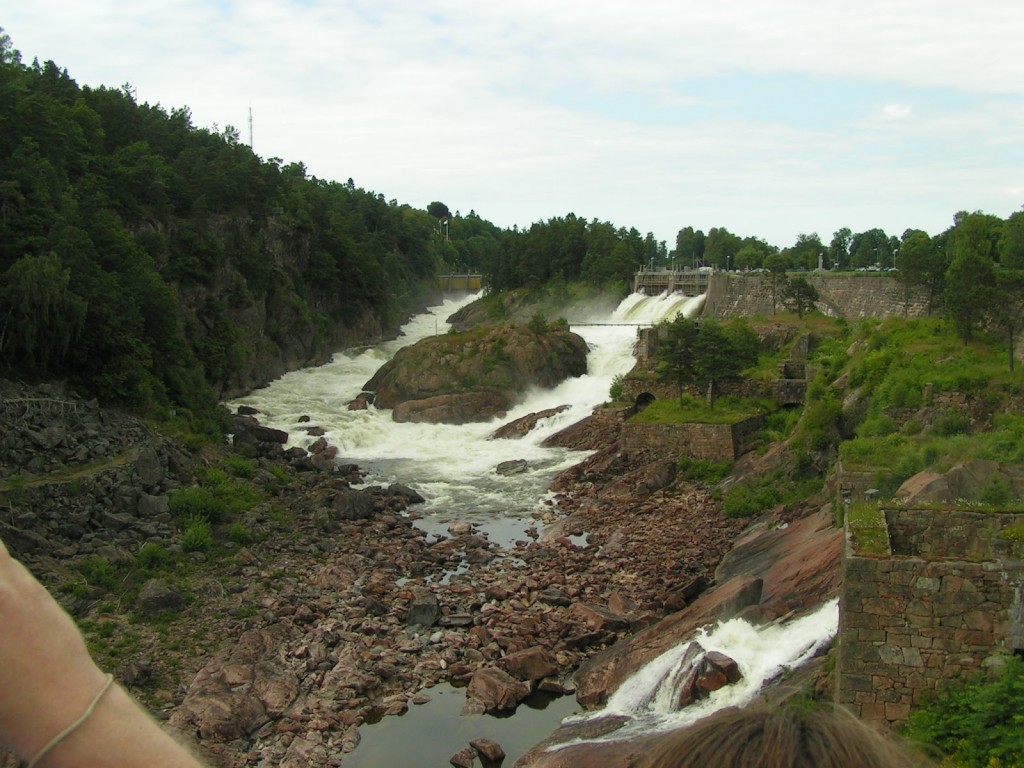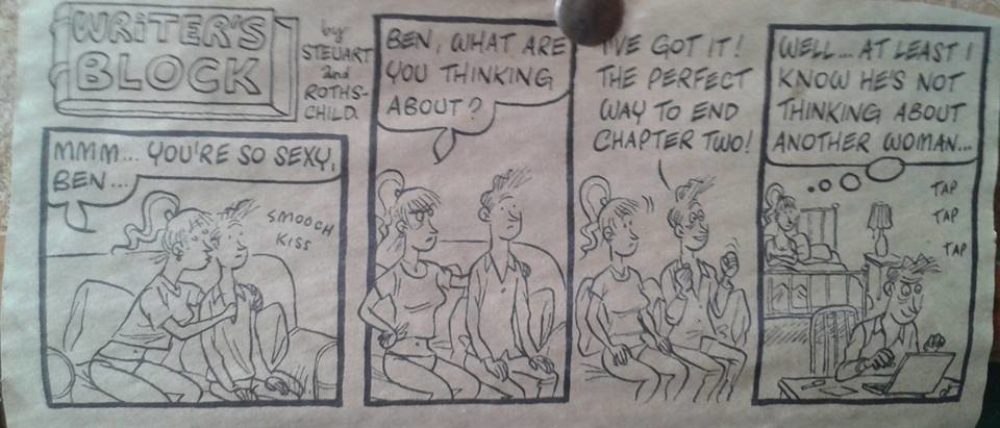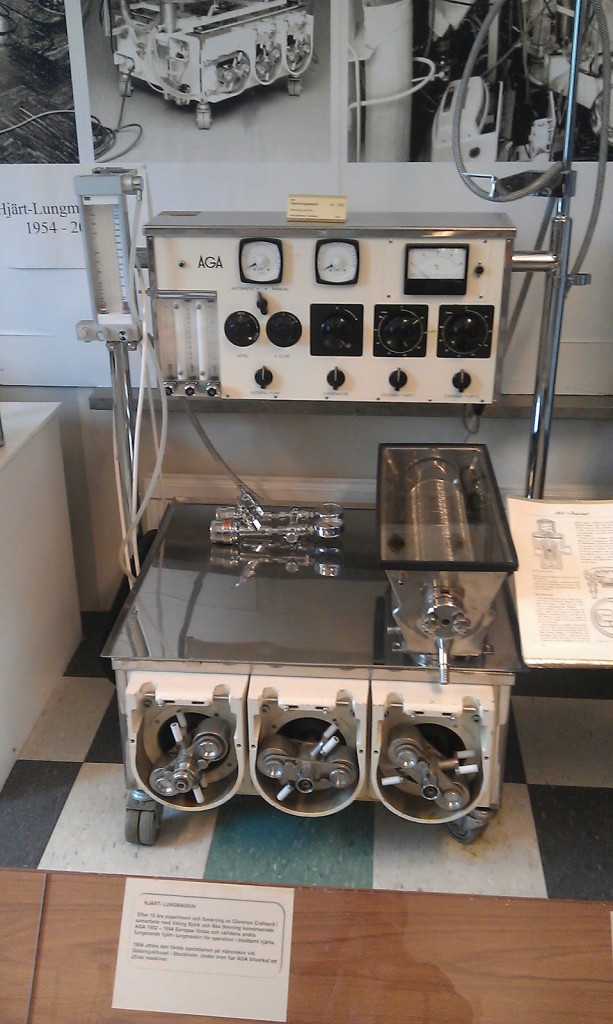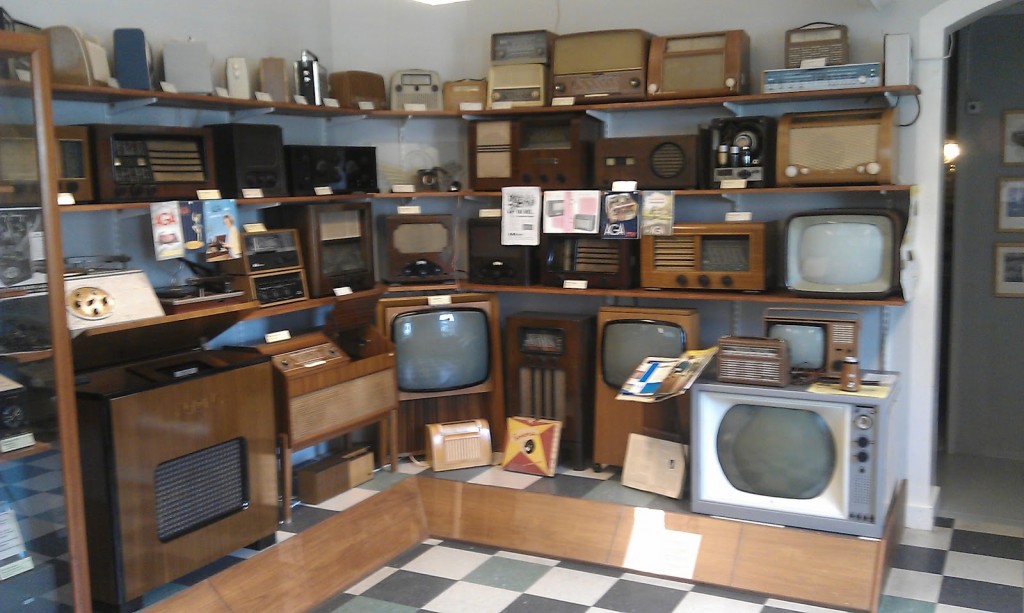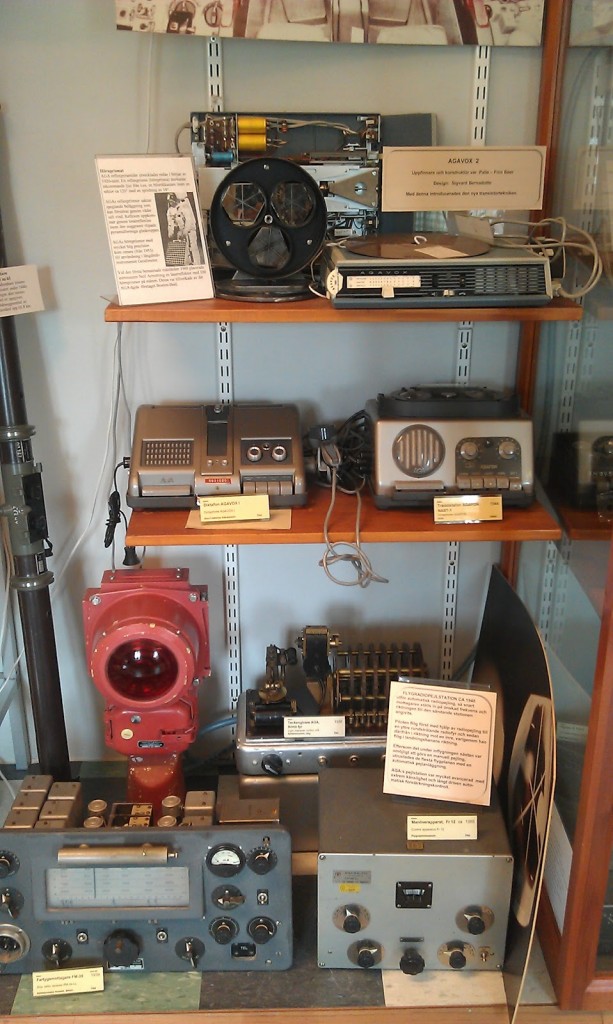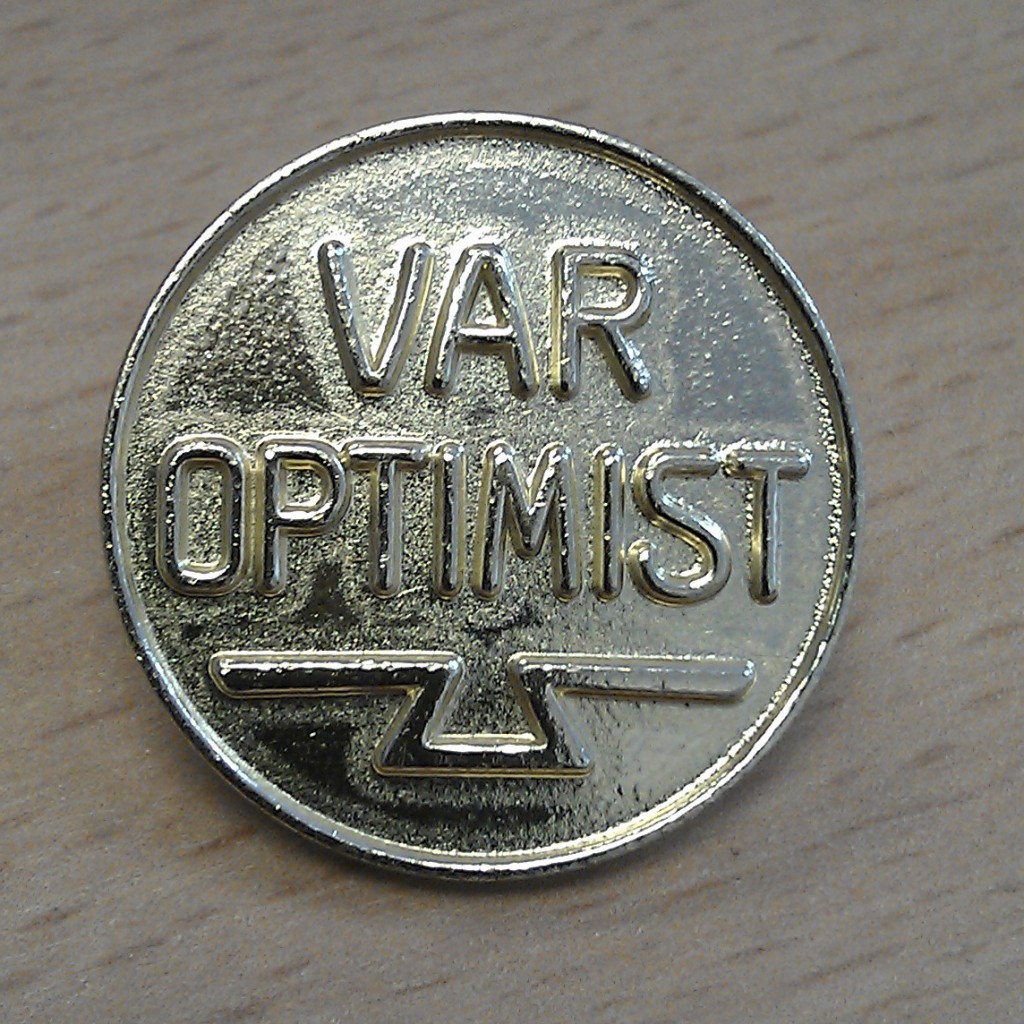The west coast of Sweden is flat, fertile farmland, except where it isn’t. Where it isn’t is because of rocks – large, red-grey protrusions, dropped and worn smooth by ice thousands of years ago and jutting out of the soil. At the bottom end of the scale are the ones the size of a small car or maybe a house – they can be landscaped around. At the top end are the ones tens of metres high and the size of a city block. These are more accurately known as geography and there’s no landscaping here – they are the landscape and you just go around them.
At one point, the flat farmland disappears below sea level but the rocks remain. At this point you now have an archipelago.
Fjällbacka is a town on the west coast, overlooked by the 75m high Vetteberget. I decided that if I weren’t already married, this is where I would have proposed. We were there at about 5pm in the afternoon, which is nowhere near sunset at that latitude but still the sun is low enough to sparkle on the water and the black dots of the islands stretch as far away towards the horizon as you can see. If you’ve never read Ursula le Guin’s Earthsea novels, now would be a very good time to start.
It was also a favourite haunt of Ingrid Bergman and they remember her fondly.
We also took a boat out to Väderöarna, largest of the islands and Sweden’s most westerly inhabited possession. Now I was not only thinking of Earthsea but also of I, Claudius, as the fate of several characters at one point or another is to be exiled to a small barren rock in the Mediterranean – the worse your downfall, the smaller and more barren the rock. If Sweden went in for that kind of thing, this place would be littered with exiles. So inevitably I got to thinking up plots and, do you know, I might actually write a story – now there’s a thing.
But there’s things to see inland too. What actually brought us to the area in the first place were the rock carvings of Tamunshede – a late Bronze Age, World Heritage phenomenon. 3000 years ago someone worked out another use for those rocky surfaces – you can carve on them. (Rather, chip away at them to a depth of between 0.5-1cm.) There are four main locations all within a couple of miles, all on south- or east-facing stones, and all on stones where the water continues to run down for a while even when it’s stopped raining. They have been coloured in by present day experts so they can actually be seen – they are so faint as to be invisible in their natural form.
Of course, we only have modern day interpretations to go on, but …
A lot of the time, men are attacking each other with axes.

At one point they are distinctly on a boat as they do so. Were they having sea battles back then?
From the design, the boats are clearly ancestors of the Viking longships, though experts say boats that size couldn’t have been built back then. Therefore, these boats have a symbolic, religious meaning – maybe a way of voyaging to the afterlife. Well, maybe – but even so, were the longships eventually built that size because someone realised that in principle there was no reason they couldn’t be?
And if the boats are symbolic, why are guys still fighting on them?
All the bows found from that time are longbows but these are quite distinctly short, like those used by Asian horsemen. Was there contact? No reason why not. All you have to do is keep going east (or from the horsemen’s point of view, west).
You can’t help but notice just how male the men are – for some reason the women are identified by long hair rather than anything, um, organic. To the right sort of mind it gives rise to all kinds of humour – no, change that, I mean one particular kind of humour. I may have thought up a few jokes but I won’t share them and I didn’t buy the book.
And (we learned) the reason horsemeat isn’t generally eaten in Sweden is because eating horsemeat was seen as a pagan practice and therefore discouraged by the early church. So religion has its uses.
